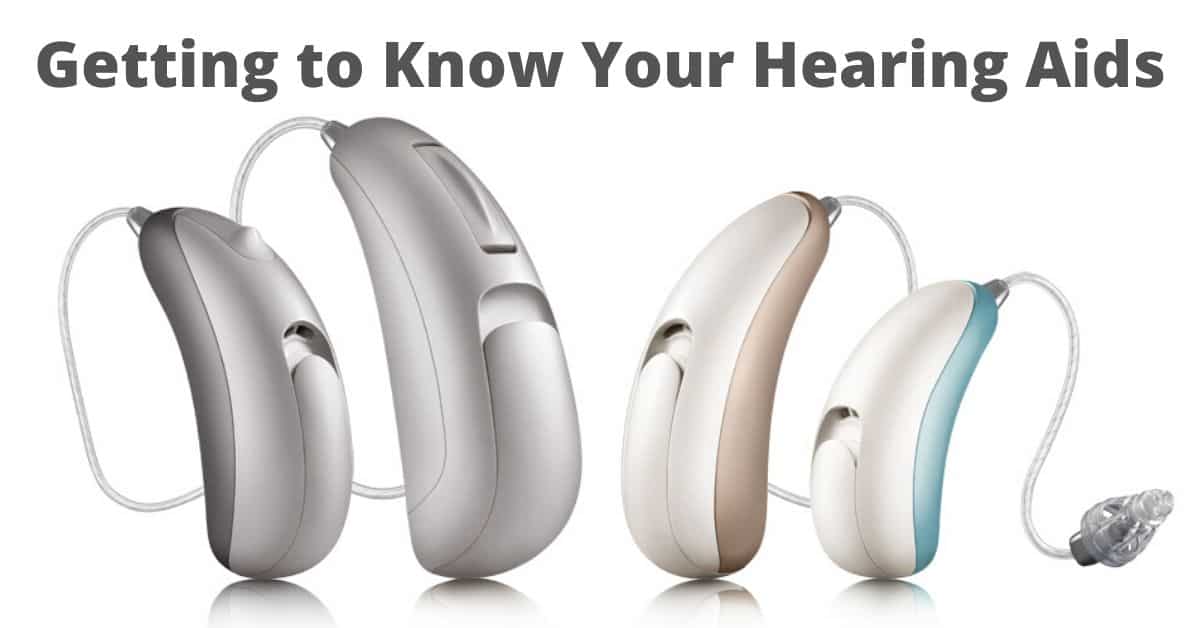When it comes to finding the right hearing aids, you have a lot of options. Modern hearing technology comes in a variety of shapes and sizes to suit every lifestyle, hearing need, and budget, and each hearing aid offers unique features to help you hear clearly. Getting to know your hearing aids will help you make the right decision when finding the best hearing aids for your ears.
What Are Hearing Aids?
Hearing aids are sophisticated pieces of technology that pack a lot of punch in a tiny case. Designed to help you hear better, hearing aids improve your quality of life by helping you easily follow conversations, hear what your loved ones are saying, and fully participate in every aspect of your life.
Modern hearing aids are small devices that nestle behind the ear, sit in the outer ear, or are even placed inside the ear canal, making them almost invisible. You’ll find hearing aids in a range of colors to match skin or hair tones, or you can spice things up with brightly colored hearing aids to match your personal style. These devices help you hear in a range of situations, and mimic natural hearing.
Types of Hearing Aids
There are a number of types of hearing aids to choose from, and the one you select depends on your lifestyle and hearing needs. One of the most common hearing aids are Behind-the-Ear devices, where the hearing aid is tucked away behind the ear. Receiver-in-Canal hearing aids also house most of the hearing aid behind the ear.
In-the-Ear hearing devices sit in the outer ear, while In-the-Canal devices sit at the top of the ear canal, and Invisible-in-the-Canal hearing aids are placed within the ear canal, making them impossible to spot. Smaller hearing aids have less power than Behind-the-Ear devices, and they’re recommended for people with mild to moderate hearing loss.
Digital Hearing Technology
Most of today’s hearing aids use digital hearing technology. Hearing aids are like a tiny computer chip, that’s able to analyze all the sounds around you, modify them, and help you hear what you’re focusing on. Digital hearing aids can enhance speech sounds, reduce distracting background noises, and provide added clarity to the sounds you want to hear. Many will even switch between programs and settings automatically as you move between listening environments, so you won’t need to worry about manually adjusting the hearing devices.
Many digital hearing aids include CROS technology. Sounds from one hearing aid are sent to the other hearing aid, so you’ll hear sounds in both ears, regardless of where the sound is coming from. This is especially helpful for those with severe hearing loss, as well as those with single-sided hearing loss, where sounds that reach the ear with hearing loss will be sent to the ear that’s able to hear better.
Added Features
When choosing your hearing aids, carefully consider the added features you’d like to have. This could be connectivity features, allowing you to connect your hearing aids to your smartphone. You can control your hearing aids with an app, and stream phone calls and music right to your hearing aids, using them like wireless headphones.
You may want hearing aids equipped with telecoils to help you hear in large venues such as auditoriums, lecture halls, or theatres. The telecoil in the hearing aid will connect to a loop system installed in the building, and you’ll be able to hear sounds from the PA system directly in your ears.
You can find programs and features that provide tinnitus therapy and management to reduce your experience of tinnitus, allow you to easily focus on tasks, and help you fall asleep at night. You’ll also find added features such as noise reduction and wind reduction to minimize feedback. Other features include music settings to make music listening enjoyable once again.
Choosing A Hearing Aid
With so many choices, it can be hard to know which hearing aid to choose. Consult with your hearing health specialist and think about your hearing needs. Focus on the style of hearing device that will be easy to wear, and make sure you get the added features that will help you hear where you need it the most.


